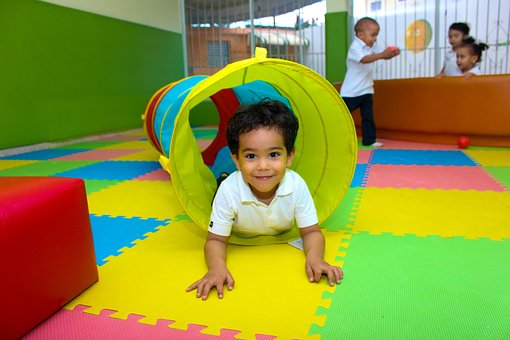CDA Professional Portfolio Resource Collection II
 The Child Development Associate (CDA) Professional Portfolio is a comprehensive compilation that showcases your skills, knowledge, and competencies in #early-childhood-education. A crucial component of this portfolio is Resource Collection II, which requires you to #develop nine #developmentally appropriate learning experiences across various curricular areas.
The Child Development Associate (CDA) Professional Portfolio is a comprehensive compilation that showcases your skills, knowledge, and competencies in #early-childhood-education. A crucial component of this portfolio is Resource Collection II, which requires you to #develop nine #developmentally appropriate learning experiences across various curricular areas.
Overview of Resource Collection II
Resource Collection II involves creating nine learning experiences, each tailored to a specific curricular area. These areas are:
- Science/Sensory
- Language and Literacy
- Creative Arts
- Fine Motor (Indoor Activity)
- Gross Motor (Outdoor Activity)
- Self-Concept
- Emotional Skills/Regulation
- Social Skills
- Mathematics
For each learning experience, you should provide:
- Title of the Activity
- Age Group: Specify whether the activity is designed for infants, mobile infants, or #toddlers.
- List of Materials Needed
- Goal: Define what children will achieve through the activity.
- Explanation of the Learning Experience: Offer a step-by-step guide on how to conduct the activity.
- Developmental Appropriateness: Explain how the activity meets the developmental needs of the specified age group.
Steps to Develop Resource Collection II
- Select Age Groups: Decide on the age group for each activity—infants, mobile infants, or toddlers. Ensure a balanced representation across the nine activities.
- Research Activities: Utilize reputable sources to find activities that align with each curricular area.
- Customize Activities: Adapt the activities to suit the specific developmental stages and interests of the children in your care.
- Document Clearly: Use a consistent format for each activity, making it easy to follow and replicate.
- Ensure Developmental Appropriateness: Reference #developmental-milestones to confirm that each activity is suitable for the intended age group.
Formatting Tips
- Outline Structure: Create an outline for each activity to organize your thoughts and ensure all required components are included.
- Bullet Points: Use bullet points for lists, such as materials needed, to enhance readability.
- Consistency: Maintain a uniform format throughout all nine activities to present a cohesive collection.
Additional Resources
- CDA Competency Standards Book: This book provides detailed guidelines and should be your primary reference.
By thoughtfully developing Resource Collection II, you demonstrate your ability to create engaging, developmentally appropriate learning experiences that cater to the diverse needs of young children. This collection not only fulfills a requirement for your CDA credential but also serves as a valuable resource in your professional practice.
Here's a basic example of a learning experience for Resource Collection II for Science/Sensory targeting toddlers.
Science/Sensory Activity Example
Title of the Activity: Exploring Ice and Water
Age Group: Toddlers (18-36 months)
Materials Needed:
- Small plastic bin or shallow tray
- Ice cubes (some colored with food coloring)
- Small plastic cups and spoons
- Warm water in a small pitcher
Goal: To introduce toddlers to concepts of temperature and states of matter (solid and liquid) through #sensory exploration.
Description of the Learning Experience:
- Set up the activity by filling a small bin with ice cubes. Add a few drops of food coloring to some ice cubes in advance to create colorful ice blocks.
- Show the children the bin of ice and encourage them to touch and observe.
- Ask questions like, "What does the ice feel like? Is it cold or warm?"
- Pour a small amount of warm water over the ice and encourage children to observe the melting process.
- Allow children to use cups and spoons to move the ice around and experiment with melting.
Developmental Appropriateness: This activity is suitable for toddlers as it promotes sensory exploration and curiosity, which are key at this developmental stage. The tactile experience helps build sensory awareness, while observing melting introduces basic science concepts. Additionally, handling the cups and spoons supports fine motor development.
- CDA Bridge Bundle: Family Child Care without Portfolio Review
- CDA Family Child Care Credential with Portfolio Review
- CDA Bridge Bundle: Family Child Care
- CDA Bridge Bundle: Infant/Toddler without Portfolio Review
- CDA Bridge Bundle: Preschool without Portfolio Review
- CDA Family Child Care Renewal
- CDA Infants/Toddlers: Brain Development and Gene Expression
- CDA Infants/Toddlers: Stages of Development
- CDA Infant/Toddler Credential with Portfolio Review
- CDA Preschool Credential with Portfolio Review
- CDA Professional Portfolio Resource Collection II
- CDA Professional Portfolio Resource Collection I-3
- CDA Professional Portfolio's Resource Collection (RC) IV
- Child Development Associate (CDA) Professional Portfolio, Resource Collection V (RC V)
- Where to Find the Forms Needed for Your CDA Professional Portfolio
- CDA Home Visitor Professional Portfolio RC V: Family Action Plan
- CDA Professional Portfolio RC I-2
- Organizing the CDA Professional Portfolio
- CDA Professional Portfolio Family Questionnaires
- CDA Professional Portfolio RC III
- Why do you need to include Family Questionnaires in the CDA Professional Portfolio
- Building Your CDA Professional Portfolio
- Weekly Home Visit Plan: CDA Home Visitor Resource Collection RC I-2
- CDA Portfolio Checklist: A Guide for CDA Candidates
- Building Your CDA Professional Portfolio: Understanding the Cover Sheet
- How to Build a Winning Professional Portfolio for Your CDA Certification
- Building a Strong Professional Portfolio for Your CDA Credential
- Professional Growth and Continuing Education for Early Educators CDA
- Developing Your CDA Professional Philosophy Statement
- I completed my CDA training. Do I have a CDA Credential now?